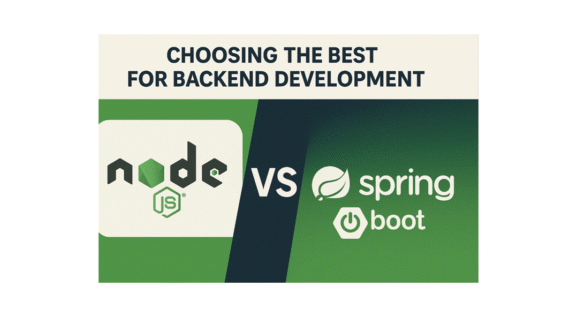Top Fintech Statistics 2025
The financial technology (fintech) industry continues to reshape the way we interact with money, investments, and financial services. As we enter 2023, it is essential to stay updated on the latest fintech statistics to understand the industry’s growth, impact, and emerging trends. In this blog, we will explore the top fintech statistics that provide insights into the transformative power of technology in finance.
Top Fintech Statistics to Know in 2023
1. Global Fintech Investment:
Fintech investment continues to soar, attracting significant capital from investors worldwide. In 2023, global fintech investment is projected to reach $168 billion, indicating a robust growth trajectory for the industry. This substantial investment reflects the confidence and recognition of fintech’s potential to revolutionize traditional financial services.
2. Rise of Digital Payments:
The adoption of digital payment solutions is on the rise, driven by convenience, security, and ease of use. By 2023, digital payments are projected to reach $6.7 trillion globally, with a growth rate of 30% per year. The increasing popularity of mobile wallets, contactless payments, and peer-to-peer payment apps signifies a shift towards a cashless society.
3. Blockchain and Cryptocurrency Growth:
Blockchain technology and cryptocurrencies continue to disrupt traditional financial systems. By 2023, the global blockchain market is expected to reach $23.3 billion, with industries embracing the technology for enhanced security, transparency, and efficiency. Moreover, the cryptocurrency market cap is projected to surpass $2 trillion, highlighting the growing acceptance and adoption of digital assets.
4. Open Banking and API Integration:
Open banking, enabled by application programming interfaces (APIs), is transforming the banking landscape. By 2023, it is estimated that 60% of banks globally will have implemented open banking initiatives. This shift towards open APIs fosters collaboration between banks and fintech startups, enhancing customer experience, and enabling seamless integration of financial services.
5. Fintech Adoption in Emerging Markets:
Fintech is playing a crucial role in promoting financial inclusion in emerging markets. In 2023, it is projected that over 70% of adults in emerging economies will have a fintech account. Fintech solutions, such as mobile banking, microfinance, and digital wallets, are bridging the gap and providing access to financial services for the unbanked population.
6. Artificial Intelligence (AI) in Finance:
AI is revolutionizing the finance industry by improving efficiency, risk management, and customer experience. By 2023, 80% of financial institutions are expected to leverage AI in some form. AI-powered chatbots, robo-advisors, fraud detection systems, and personalized financial recommendations are transforming how financial services are delivered and consumed.
7. Fintech Collaboration with Traditional Financial Institutions:
Collaboration between fintech companies and traditional financial institutions is on the rise. In 2023, it is anticipated that 80% of banks will partner with fintech firms to drive innovation and improve customer offerings. These partnerships leverage the agility and technological expertise of fintech startups while leveraging the established customer base and regulatory compliance of traditional banks.
8. RegTech Adoption:
Regulatory technology (RegTech) solutions are gaining traction to streamline compliance processes and mitigate risks. By 2023, the global RegTech market is expected to exceed $16 billion. RegTech solutions employ technologies like AI, machine learning, and data analytics to automate compliance procedures, reducing costs and enhancing regulatory efficiency for financial institutions.
9. Wealthtech’s Impact on Investment Management:
Wealthtech platforms are transforming the investment management landscape. By 2023, it is estimated that assets under management (AUM) through digital wealth platforms will exceed $5 trillion. These platforms offer automated investment advice, goal-based planning, and personalized portfolio management, democratizing access to sophisticated investment strategies.
10. Cybersecurity Challenges and Investments:
As fintech evolves, cybersecurity remains a top priority. By 2023, global spending on cybersecurity in the financial industry is projected to reach $150 billion. With the increasing sophistication of cyber threats, fintech companies and financial institutions are investing heavily in robust security measures to safeguard customer data, transactions, and infrastructure.
11. Insurtech Market Growth:
The insurance technology (insurtech) sector continues to expand rapidly. By 2023, the global insurtech market is projected to reach $150 billion. Insurtech startups are leveraging technologies such as AI, data analytics, and IoT (Internet of Things) to streamline underwriting, claims processing, and customer experience, enhancing efficiency and driving innovation in the insurance industry.
12. Decentralized Finance (DeFi) Growth:
Decentralized Finance (DeFi) is reshaping traditional financial systems by leveraging blockchain technology. By 2023, the total value locked in DeFi protocols is expected to surpass $500 billion. DeFi enables peer-to-peer lending, decentralized exchanges, yield farming, and other innovative financial services, providing users with greater control, transparency, and accessibility.
13. Biometric Payments and Wearables:
The use of biometric payments and wearable devices is on the rise. By 2023, it is estimated that over 1.1 billion people will use biometric authentication for payments. Fintech companies are integrating biometric technologies into wearables, such as smartwatches and fitness trackers, to facilitate secure and contactless transactions, enhancing convenience and user experience.
14. Peer-to-Peer Lending Growth:
Peer-to-peer (P2P) lending platforms are gaining popularity as an alternative to traditional lending institutions. By 2023, the global P2P lending market is expected to reach $1.2 trillion. P2P lending connects borrowers directly with lenders, offering competitive interest rates, streamlined processes, and increased accessibility to credit for individuals and small businesses.
15. Impact of COVID-19 on Fintech Adoption:
The COVID-19 pandemic has accelerated the adoption of fintech solutions globally. By 2023, it is projected that the total number of fintech users will exceed 3 billion. The pandemic’s impact, including the shift to remote work and the increased reliance on digital services, has accelerated the adoption of contactless payments, digital banking, and online investing platforms.
16. Fintech Partnerships with Traditional Banks:
Collaboration between fintech startups and traditional banks is on the rise. By 2023, it is expected that 80% of banks will form partnerships with fintech companies. Traditional banks leverage fintech innovations to enhance their digital capabilities, while fintech startups gain access to established customer bases and regulatory expertise, fostering a symbiotic relationship between the two.
17. Fintech Investments and Funding:
Investments in fintech companies continue to soar. By 2023, global fintech funding is projected to surpass $50 billion. Venture capital firms, private equity investors, and institutional investors are fueling fintech growth by injecting capital into promising startups and innovative fintech solutions across various sub-sectors.
18. Fintech Adoption in Developing Countries:
Fintech is making significant inroads in developing countries, addressing financial inclusion challenges and expanding access to financial services. By 2023, it is estimated that over 60% of adults in developing countries will have a financial account through a fintech platform. Mobile money solutions, digital wallets, and microfinance platforms are empowering underserved populations, driving economic growth and poverty reduction.
19. Digital Wallet Adoption:
Digital wallet usage is on the rise globally, driven by the convenience of mobile payments and contactless transactions. By 2023, it is estimated that the number of digital wallet users will exceed 2.1 billion. Digital wallets consolidate payment methods, loyalty cards, and coupons in a single mobile app, simplifying transactions and enhancing the overall shopping experience.
20. Personal Finance Apps:
Personal finance apps are empowering individuals to take control of their financial well-being. By 2023, it is estimated that the number of personal finance app users will exceed 1.2 billion. These apps offer budgeting tools, expense tracking, savings goals, and investment management features, providing users with real-time insights and helping them make informed financial decisions.
21. Real-Time Analytics for Trading:
Real-time analytics tools are empowering traders with data-driven insights and decision-making capabilities. By 2023, it is projected that real-time analytics adoption in trading will grow by 70%. These tools provide market trends, sentiment analysis, and predictive analytics, enabling traders to make faster, more informed investment decisions and capitalize on market opportunities.
22. Data Privacy and Consent Management:
Data privacy and consent management are key considerations in the fintech industry. By 2023, it is expected that over 80% of financial institutions will have implemented robust data privacy and consent management frameworks. Fintech companies prioritize customer data protection, compliance with data privacy regulations, and transparent data usage practices to maintain trust and security.
23. Digital Mortgage Lending:
Digital mortgage lending is transforming the homebuying process, offering convenience and efficiency. By 2023, it is expected that digital mortgage lending will account for over 30% of all mortgage originations. Fintech platforms streamline the mortgage application, approval, and closing processes, leveraging automation, data analytics, and digital documentation to expedite the lending process.
24. Augmented Reality (AR) in Banking:
Augmented Reality (AR) technology is being explored by banks to enhance customer experiences. By 2023, it is projected that AR applications in banking will generate over $2 billion in revenue. AR-enabled banking apps provide interactive experiences, such as virtual branch visits, personalized financial insights, and real-time data visualization, making banking more engaging and immersive.
25. Voice and Conversational Banking:
Voice-enabled and conversational banking solutions are gaining popularity, allowing users to perform banking tasks using voice commands or chatbots. By 2023, it is expected that voice banking transactions will exceed $1.3 trillion. Voice assistants and chatbots provide personalized banking assistance, account information, fund transfers, and bill payments, offering users a convenient and hands-free banking experience.
26. Impact of COVID-19 on Fintech:
The COVID-19 pandemic has accelerated the adoption of fintech solutions, transforming the way financial services are accessed and delivered. By 2023, it is projected that the global fintech market will reach $460 billion, driven in part by the post-pandemic recovery. The pandemic highlighted the need for contactless payments, digital banking, and remote financial services, leading to increased fintech adoption.
27. Real Estate Fintech:
Fintech is disrupting the real estate industry by offering innovative solutions for property financing, crowdfunding, and property management. By 2023, it is expected that real estate fintech transactions will exceed $700 billion. Fintech platforms provide alternative financing options, streamline property transactions, and offer real-time data analytics for informed investment decisions.
28. Mobile Payments:
Mobile payment solutions are transforming the way people make transactions. By 2023, it is projected that mobile payment volume will exceed $5 trillion. Fintech companies, e-wallet providers, and payment platforms enable users to make quick and secure payments using their smartphones, eliminating the need for physical cash or cards.
29. Data Analytics for Credit Scoring:
Data analytics and alternative data sources are revolutionizing credit scoring and lending decisions. By 2023, it is expected that alternative data-driven credit scoring will impact over $7 trillion in lending. Fintech platforms leverage non-traditional data, such as social media activity and utility payments, to assess creditworthiness and provide access to credit for underserved populations.
30. Green Finance and Carbon Neutrality:
Green finance initiatives are on the rise, promoting sustainable investments and carbon neutrality. By 2023, it is projected that green finance assets will exceed $3 trillion. Fintech platforms offer green investment options, carbon footprint calculators, and sustainable financing solutions, enabling individuals and businesses to support environmentally friendly projects.
31. Blockchain Adoption:
Blockchain technology continues to gain traction in various fintech applications beyond cryptocurrencies. By 2023, it is expected that 90% of banks will have invested in blockchain projects. Fintech companies leverage blockchain for secure and transparent transactions, supply chain management, smart contracts, and identity verification, revolutionizing traditional financial processes.



